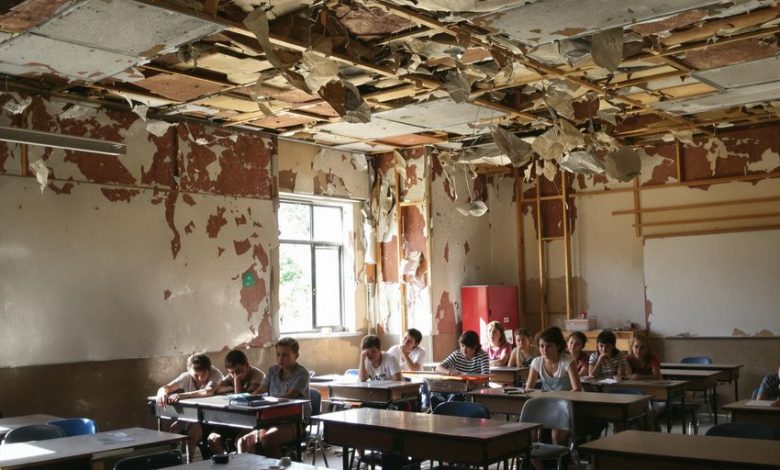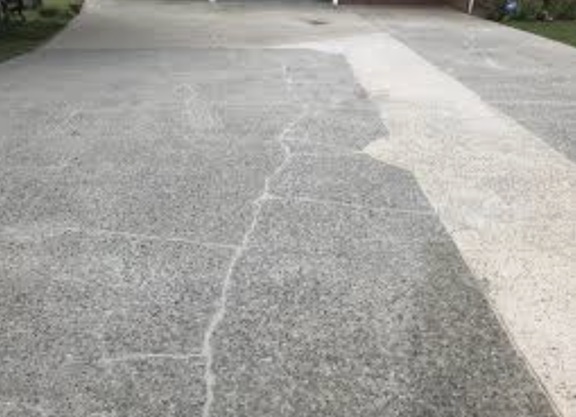Presence of Asbestos in Schools

What Is Asbestos and Why Was It Used?
Asbestos is a naturally occurring mineral that was widely used in construction due to its resistance to heat, fire, and chemicals. Known for its durability, it was often referred to as a “miracle material” in the mid-20th century. Schools built between the 1950s and 1980s frequently incorporated asbestos into insulation, ceiling tiles, floor tiles, and even pipe linings. Its affordability and versatility made it a popular choice for public building projects. However, its dangers became evident when asbestos fibers were discovered to cause severe health issues, including respiratory diseases and cancers, when inhaled.
Common Locations of Asbestos in School Buildings
Asbestos-containing materials (ACMs) can be found in numerous parts of older school buildings. Some of the most common locations include:
- Ceiling tiles and textured coatings
- Insulation around pipes and boilers
- Vinyl floor tiles and adhesives
- Cement used in walls and roofing materials
If left undisturbed, these materials typically do not pose a risk. However, damage or wear can release microscopic asbestos fibers into the air, creating a hazardous environment for students and staff.
Regulations Governing Asbestos in Schools
To address the dangers of asbestos, numerous regulations have been established. In the United States, the Asbestos Hazard Emergency Response Act (AHERA) requires schools to:
- Inspect buildings for asbestos-containing materials.
- Develop and implement asbestos management plans.
- Notify parents, teachers, and employees annually about the presence of asbestos and any actions taken to manage it.
Schools must also ensure proper training for maintenance staff and hire licensed professionals for any asbestos removal or abatement projects. These measures aim to minimize exposure risks and prioritize the safety of children and staff. For more insight into the legal responsibilities of schools regarding asbestos, refer to health and safety compliance.
Health Risks Associated with Asbestos Exposure in Children
How Asbestos Affects Children’s Developing Bodies
Children are particularly vulnerable to asbestos exposure due to their developing bodies. Their faster breathing rates mean they inhale more air—and potentially more asbestos fibers—than adults do. Additionally, because their cells divide more rapidly, any damage from inhaled asbestos can spread more quickly through their growing tissues. This increased vulnerability underscores the importance of minimizing asbestos exposure wherever children spend significant time, like schools.
Long-Term Health Implications of Exposure
When children are exposed to asbestos, the effects often don’t manifest until decades later. Asbestos fibers, once inhaled, can embed themselves in the lungs or other tissues, potentially leading to diseases like lung cancer, asbestosis, or mesothelioma. These conditions are serious and, in many cases, fatal. The long latency period of asbestos-related diseases means that children exposed today might not see the health consequences until much later in life, making early prevention critical.
Comparing Risks Between Children and Adults
The risks of asbestos exposure are higher for children compared to adults for several reasons:
- Higher Breathing Rates: Children breathe faster, which increases the likelihood of inhaling airborne asbestos fibers.
- Proximity to Dust: Being shorter, children are closer to the ground, where disturbed asbestos particles tend to settle.
- Longer Life Expectancy: Since asbestos-related illnesses can take decades to develop, children have more time for these diseases to emerge compared to adults.
These factors combined make children significantly more susceptible to the dangers of asbestos exposure. Parents, educators, and policymakers must work together to ensure schools remain safe environments for learning.
The History of Asbestos Use in Educational Institutions
Why Asbestos Was Popular in School Construction
During the mid-20th century, asbestos was heralded as a “miracle material” due to its unique properties. It was fire-resistant, durable, and relatively affordable, making it an attractive option for construction. Schools, in particular, benefited from its use in insulation, ceiling tiles, and cement products. These materials not only helped reduce energy costs but also provided soundproofing, which was ideal for educational settings. This widespread adoption was largely driven by the belief that asbestos was a safe and cost-effective solution for large-scale building projects.
Timeline of Asbestos Usage in Schools
The peak period of asbestos use in schools spanned from the 1950s to the early 1980s. During this time, it was incorporated into various building components, such as pipe insulation, floor tiles, and roofing materials. By the mid-1970s, however, growing awareness of the health risks associated with asbestos exposure began to surface. Regulatory actions, like the ban on spray-applied surfacing materials in the U.S. in 1973, marked the beginning of a shift in attitudes. Despite these changes, many schools built before these regulations remain laden with asbestos-containing materials.
Shift in Policies and Awareness Over Time
The late 20th century saw a significant transformation in how asbestos was perceived and managed. Early on, its dangers were largely underestimated or ignored. However, as scientific evidence linking asbestos to severe health issues like mesothelioma and asbestosis became undeniable, public and governmental attitudes shifted. Federal and state regulations now strictly govern asbestos use and disposal, as outlined in various safety laws. Schools are required to follow stringent guidelines to ensure the safety of students and staff. This evolution reflects a broader commitment to addressing the legacy of asbestos in educational institutions.
How Asbestos Exposure Occurs in Schools
Disturbance of Asbestos-Containing Materials
When asbestos-containing materials (ACMs) are disturbed, tiny fibers can break free and enter the air. This can happen during day-to-day activities or when structural components of a school deteriorate over time. Even something as simple as a ceiling tile being bumped can release fibers if it contains asbestos. In older schools, materials like insulation, floor tiles, and pipe coverings often contain asbestos, making accidental exposure a real possibility.
Renovation and Maintenance Risks
Renovation projects are one of the most common ways asbestos becomes airborne in schools. Maintenance workers may unknowingly cut into or drill through ACMs, releasing fibers into the air. Without proper safety protocols, these projects can put everyone in the building at risk. Licensed professionals are required for handling asbestos safely, but lapses in oversight can still occur.
Accidental Damage by Students or Staff
Schools are busy places, and accidents happen. A student may knock over a piece of furniture, or a staff member might inadvertently damage a wall or floor that contains asbestos. In such cases, fibers can be released into the air, posing a health hazard to everyone nearby. The dynamic environment of schools makes it especially important to identify and secure ACMs to prevent unintentional exposure.
The Role of Asbestos Management Plans in Schools
What Is an Asbestos Management Plan?
An asbestos management plan is a structured document that outlines how a school identifies, monitors, and manages asbestos-containing materials (ACMs) on its premises. Every school is legally required to have such a plan in place to protect students, staff, and visitors from potential asbestos exposure. This plan typically includes detailed information about the location and condition of ACMs, the steps for regular monitoring, and procedures to follow in case of an incident.
The plan is not just a formality—it is an active tool for ensuring safety. Schools must ensure that all staff, contractors, and even parents are informed about the plan’s existence and its purpose. Communication is key to keeping everyone aware of potential risks and the measures in place to manage them.
Key Components of Effective Management
A well-structured asbestos management plan should include:
- Identification of Asbestos: Schools must conduct a professional asbestos survey to locate and assess the condition of ACMs.
- Regular Inspections: Ongoing checks are critical to monitor the state of ACMs and address any deterioration.
- Clear Procedures: The plan should outline steps for handling asbestos safely during maintenance, renovation, or accidental damage.
- Record Keeping: Schools are required to maintain detailed records of all asbestos-related activities, including surveys, inspections, and any removal or repair work.
- Training and Awareness: Staff members must be trained to recognize ACMs and follow safety protocols.
These components work together to minimize the risk of exposure and ensure that any asbestos present remains safely managed.
Parental Rights to Access Information
Parents play a vital role in the safety of their children, and they have the right to know about asbestos management in schools. Schools are obligated to inform parents annually about the availability of the asbestos management plan and any related activities. Parents can request to review the plan to understand how the school is addressing the presence of asbestos.
Transparency is crucial. By keeping parents informed, schools not only build trust but also ensure accountability in maintaining a safe environment for all.
Steps to Mitigate Asbestos Risks in Schools
Safe Removal vs. Management in Place
Managing asbestos in schools often boils down to two choices: removing it entirely or keeping it in place under strict controls. Licensed professionals must handle any removal process to ensure safety. This involves sealing off areas, wetting asbestos-containing materials to prevent fiber release, and disposing of them according to federal and state laws. However, not all asbestos needs to be removed. In many cases, materials can be left undisturbed and monitored regularly, ensuring they remain safe.
Importance of Regular Inspections
Routine inspections are key to keeping asbestos risks in check. Schools should conduct these checks to assess the condition of any asbestos-containing materials (ACMs). If materials show signs of wear or damage, immediate action—such as repair or removal—should be taken. Regular inspection reports should be updated and shared with relevant authorities and stakeholders.
Role of Licensed Professionals in Abatement
Dealing with asbestos is not a DIY job. Schools must rely on certified asbestos abatement professionals who are trained to handle this hazardous material safely. These experts follow strict protocols, including isolating work areas, wearing protective gear, and using specialized equipment to minimize exposure. Their role is critical in both managing asbestos in place and ensuring its safe removal when necessary.
Legal and Ethical Responsibilities of Schools
Federal and State Regulations on Asbestos
Schools in the United States must adhere to strict federal and state laws governing asbestos management. One key regulation is the Asbestos Hazard Emergency Response Act (AHERA), which requires public and nonprofit private schools to inspect their buildings for asbestos-containing materials (ACMs). AHERA also mandates that schools create and maintain an asbestos management plan, which should be accessible to parents, staff, and regulatory authorities. Regular inspections every three years are essential to ensure compliance and safety.
At the state level, additional policies may impose stricter requirements, such as more frequent inspections or specific reporting protocols. It is critical for schools to stay updated on both federal and state regulations to avoid penalties and ensure the safety of their students and staff.
Ethical Considerations in Protecting Children
Beyond legal requirements, schools have an ethical duty to safeguard the health of their students and staff. Children are particularly vulnerable to asbestos exposure due to their developing respiratory systems, making it even more important for schools to act responsibly. Ethical responsibilities include:
- Proactively identifying and managing asbestos risks, even when not legally mandated.
- Providing transparent communication with parents and staff about potential hazards and safety measures.
- Ensuring that any asbestos-related work, such as removal or containment, is carried out by licensed professionals.
Failing to address asbestos risks not only endangers lives but also erodes trust within the school community.
Accountability in Case of Negligence
When schools neglect their asbestos management responsibilities, the consequences can be severe. Legal actions may arise if negligence leads to asbestos exposure, and schools may face penalties, lawsuits, or loss of funding. Accountability mechanisms are in place to ensure compliance, including oversight by the Environmental Protection Agency (EPA).
Moreover, schools must maintain detailed records of inspections, abatement efforts, and communication with stakeholders. These records not only demonstrate compliance but can also serve as evidence in the event of legal disputes. Transparency and accountability are key to building a safe and trustworthy educational environment.
Case Studies of Asbestos Incidents in Schools
Notable Examples of Exposure Events
Over the years, several schools across the United States have faced asbestos-related issues, leading to health concerns and disruptions.
- Akron, Ohio (March 2015): A photo showing an asbestos-abatement worker in protective gear inside a high school classroom sparked public outrage. Parents expressed frustration over the lack of clear communication from school authorities.
- Arlington, Virginia (March 2015): A church-run preschool was shut down after volunteers unknowingly disturbed asbestos-containing flooring, releasing hazardous fibers into the air. The incident left over 100 children without daycare facilities.
- St. Louis Park, Minnesota (February 2011): Officials temporarily closed a high school and junior high after discovering asbestos dust from damaged floor tiles.
Lessons Learned from Past Incidents
These cases highlight several key takeaways:
- Effective communication with parents and staff is critical during asbestos-related incidents to prevent panic and misinformation.
- Regular inspections and proper training for maintenance staff can significantly reduce accidental exposure risks.
- Schools must have an accessible and updated asbestos management plan to handle emergencies swiftly and responsibly.
Impact on Affected Communities
The aftermath of asbestos incidents often extends beyond immediate health risks. For example:
- Financial strain: Schools like the Ocean View School District in California had to deplete funds to relocate students after asbestos was detected in classrooms.
- Community trust: Events like these erode trust between schools and families, as seen in Akron, Ohio, where parents felt excluded from critical decisions.
- Long-term health monitoring: Families and staff exposed to asbestos may face years of uncertainty regarding potential health outcomes.
Asbestos in schools is not just a health issue—it’s a community challenge. Addressing it requires transparency, proactive measures, and a commitment to safeguarding everyone in the school environment.
Parental Actions to Address Asbestos Concerns
How to Identify Potential Risks
Parents play a critical role in ensuring their children’s safety in schools. If a school was constructed before the 1980s, there is a chance it contains asbestos in materials like insulation, ceiling tiles, or flooring. Parents should ask the school administration whether an asbestos management plan exists. This plan outlines how asbestos-containing materials are monitored and managed. Parents should also visually inspect areas accessible to students for signs of damage, such as crumbling tiles or insulation, and report any concerns promptly.
Communicating with School Authorities
Effective communication with school administrators is essential. Parents can:
- Schedule meetings with the principal or facility manager to discuss asbestos concerns.
- Request detailed updates on the school’s asbestos management plan.
- Advocate for transparency by asking to be informed about inspections, maintenance, or abatement activities.
Maintaining a respectful and cooperative tone can help foster productive dialogue.
Escalating Concerns to Regulatory Bodies
If parents feel their concerns are not being addressed adequately, they can escalate the issue. Steps include:
- Contacting local or state health departments to report potential violations.
- Filing a formal complaint with the Environmental Protection Agency (EPA). The EPA asbestos site provides guidance on handling suspected asbestos and reporting unsafe practices.
- Engaging with parent-teacher associations to collectively advocate for action.
By taking these steps, parents ensure that schools remain accountable for creating a safe environment for all children.
The Future of Asbestos-Free Schools
Innovations in Building Materials
The push for asbestos-free schools is driving innovation in construction. Manufacturers are developing safer, durable, and cost-effective alternatives to asbestos-containing materials. For instance, fiber-cement boards and non-toxic insulation are becoming popular replacements. These materials not only eliminate health risks but also improve energy efficiency in school buildings. Embracing these advancements is key to creating safer learning environments for future generations.
Government Initiatives for Safer Schools
Governments worldwide are stepping in to address the asbestos problem. Programs focused on funding asbestos removal, like those proposed in the Immediate government action context, are crucial. Some regions are even mandating stricter inspections and certifications for school buildings. These actions reflect a growing recognition of the need to protect children, teachers, and staff from exposure to harmful fibers.
Challenges in Achieving Complete Removal
Achieving completely asbestos-free schools is not without its hurdles. Limited budgets, especially in smaller districts, often delay removal projects. Additionally, the sheer number of older school buildings still containing asbestos makes this a monumental task. However, with continued advocacy and public pressure, progress is being made. Collaboration between communities, schools, and governments will be essential to overcome these obstacles and ensure every child can learn in a safe environment.
Additional Websites
Robert King Mesothelioma Law Services




